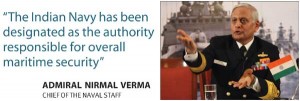Admiral Nirmal Verma interviewed by IDR
One of the most significant events in the recent times has been the commissioning of India’s nuclear submarine in July this year, even if she has a way to go before attaining op status. India has declared its intention of building a sea based deterrent as part of the triad. What are the challenges you visualize in creating this force, and in what time will we get there?
India’s Nuclear Doctrine calls for a minimum credible nuclear deterrent. The doctrine has been very carefully and aptly worded. ‘Minimum’ and ‘Credible’ imply that we must have a survivable triad, of land, sea and air based platforms that can deliver a second strike. Of these three type of platforms, the sea based variant is least vulnerable to detection and therefore the most survivable leg of the triad.
In this regard, the launch of the Arihant, by the Prime Minister in July 2008 is a significant milestone towards creating a robust sea based nuclear deterrent capability.
The induction of such a complex platform, which has been achieved through indigenous efforts, makes this achievement even more creditable. Neither the IN nor DRDO, underestimate the challenges that lie ahead in making this ’shark of steel’ dive deep and foray into the oceans.
Some of the challenges include proving of the new technology, getting the Arihant fully operational, developing doctrines and procedures, among others. We are actively working on all these issues, and more, to ensure that we have a credible deterrent in the form of Arihant and follow-on submarines.
Arihant, of course will take about two years of trials before she is inducted in the Navy. We will learn a lot from operating the Arihant, which would provide us with valuable inputs for our nuclear submarine programme.
Indo-Russian Relationship and Vikramaditya
The delays in the delivery of the Gorshkov/Vikramaditya, and the financial demands of the Russian Federation seemed to have strained Indo-Russian relationship somewhat. As an erstwhile Commander of a Soviet-built frontline warship what is your view of their naval technology vis-à-vis the West and how do you evaluate the prospects of future Indo-Russian Naval cooperation?
Firstly, let me clear the air regarding Indo-Russian relationship. Ours has been a time tested and enduring relationship and there has been no ’strain’ in the relations between the two navies. Let me also assure you that the Indian Navy is not going to settle down for anything which is not contemporary or expected to become obsolete in a few years. Price negotiations are part and parcel of any defence contract and that always involves certain amount of time for assessment of scope of work and estimation of funding required.
“”¦I can assertively state that Russian built ships are robust, easy to maintain, and dependable.”
I am pleased to inform your readers that the negotiations have progressed satisfactorily. It would be our endeavour and earnest effort to make good and compress the time delays as far as possible. Of course the ship would have to undergo all the mandatory sea trials before being accepted.
Having commanded a Soviet built destroyer earlier, I can assertively state that Russian built ships are robust, easy to maintain, and dependable. The quality of Soviet shipbuilding technology is borne out by the fact that the Rajput Class destroyers acquired from the Soviet Union commencing from 1980 continue to be frontline warships of the Indian Navy, albeit with an upgrade of the sensors and weapon package. The current generation of Russian warships have contemporary electronics, weapons and sensors.
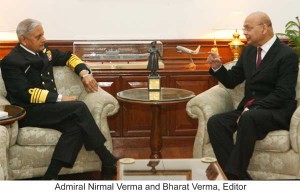 The future dimension of Indo-Russian naval cooperation is slated to grow in the years to come. At the governmental level, an inter-governmental commission on military technical cooperation is co-chaired by the two defence ministers. Three Talwar class follow-on ships are currently being built in a Russian shipyard for the IN. These ships, to be named INS Teg, Tarkash, and Trikhand, are in advanced stages of construction and are expected to be inducted between 2011 and 2012.
The future dimension of Indo-Russian naval cooperation is slated to grow in the years to come. At the governmental level, an inter-governmental commission on military technical cooperation is co-chaired by the two defence ministers. Three Talwar class follow-on ships are currently being built in a Russian shipyard for the IN. These ships, to be named INS Teg, Tarkash, and Trikhand, are in advanced stages of construction and are expected to be inducted between 2011 and 2012.
Today, cooperation is not limited to a buyer-seller relationship but includes joint development of futuristic capabilities. The INDRA series of bilateral exercises with Russia have seen a steady growth in the level of content and complexity of the exercises. The Russian Navy has exercised with the Indian Navy in our waters and we reciprocated by sending Indian naval ships to Vladivostok for INDRA 07 in Apr 2007.
As regards comparison with the “West”, I would say the equipment we wish to buy from anyone, including our own indigenous providers, needs to be in line with our requirements. We would like to have the “best”, be it from the “East or West”. May I add here that the Indian Navy, in the terms of indigenisation has always wanted it to be, “… But Home is Best!”. All agencies involved in indigenisation, public, private and R&D have to keep exerting themselves to provide the Service with the instruments they need.
US-India Military Relationship
To continue with a related topic, the common strategic interests of the US and India have been much spoken about. But there has been little to show by way of naval cooperation other than the emphasis on interoperability. What are the possible further dimensions of naval cooperation between the Indian and US Navies?
India-US naval cooperation has increased significantly over the last decade. Our navies have skills in a number of diverse areas of war-fighting. By working with a technologically advanced navy with a global presence, we have been able to share and imbibe current tactical, technological practices and techniques. A spin-off of our interaction with the US Navy has assisted in shaping the perceptions of other navies of the Indian Navy as a competent, confident and stabilising force in the Indian Ocean Region.
“A spin-off of our interaction with the US Navy has assisted in shaping the perceptions of other navies of the Indian Navy”¦”
Our operational interaction with the US Navy has steadily grown to include war-games, exercises and operations at various levels. The operational interaction between the two navies has been institutionalised at the following levels:-
- Defence Policy Group (DPG) at the apex level that is steered by the Defence Secretary, and Defence Procurement Policy Group (DPPG) steered by DG (Acquisition).
- Military Cooperation Group (MCG) for overall defence cooperation steered by HQIDS on our side and the Pentagon.
- Executive Steering Group (ESG) for Navy-to-Navy cooperation steered by DCNS and Commander, US Seventh Fleet.
- Joint Technical Group (JTG) for Defence Research and Production cooperation.
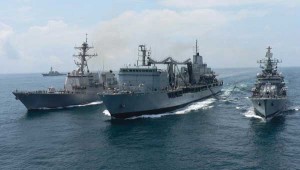 IN-USN Bilateral Exercise. IN-USN bilateral exercises are an expression of the serious intent with which both navies seek to engage with each other. It is not just about interoperability but also about laying the foundation for a robust relationship, that is built on mutual trust and understanding. The two navies engage each other through a series of exercises which are conducted annually at US and Indian locations.
IN-USN Bilateral Exercise. IN-USN bilateral exercises are an expression of the serious intent with which both navies seek to engage with each other. It is not just about interoperability but also about laying the foundation for a robust relationship, that is built on mutual trust and understanding. The two navies engage each other through a series of exercises which are conducted annually at US and Indian locations.
The MALABAR series of exercises have been being conducted since 1992, with participation of ships, submarines and aircraft from both the sides. MALABAR 2010 is scheduled to be held off the Indian coast in end April this year. The other interactions that are progressed between the two navies include:-
- IN – USN Explosives Ordnance Disposal exercise that involves surface and underwater explosive ordnance disposal serials, heliborne ops, etc.
- A salvage exercise is conducted annually alternating between an Indian and US location, wherein the diving teams from both the navies conduct salvage operations.
- An Expeditionary Warfare table top exercise, conducted annually with participation from the elements of all the three Indian Armed Forces.
The above operational engagements have allowed the Indian Navy to closely observe operations conducted by the US Navy and have assisted in achieving the following additional objectives.:-
“Our vast 7,516.6 km coastline with 13 major and 200 minor ports and innumerable landing places, makes it an extremely difficult task for any single agency to handle on its own.”
- Gaining operational and doctrinal expertise.
- Sharing transformational experience.
- Examining and imbibing the ‘best-practices’.
- Enhancing inter-operability to assist in out-of-area contingencies/operations.
- Enhancing Indian Navy’s Maritime Domain Awareness through information-sharing mechanisms.
US-Indian Navy interface has also extended into the operational and training domain. The integration of MIG 29K carrier borne aircraft with Vikramaditya required the Indian Navy to re-learn the intricacies of ‘arrested wire recovery’ that had been lost when the navy phased out its Sea Hawks and Alizes carrier borne aircraft in favour of the vertical landing Sea Harriers. Over the past few years some of our young aviators have trained with the US Navy, for ‘Arrested Landing’ conversion. They would be the ones who would be critical for developing our operational capability, when Vikramaditya joins the Fleet and the Russian built MIG 29K aircraft are flying from her deck. So we have cooperation with the US, which would ultimately help us exploit Russian hardware.
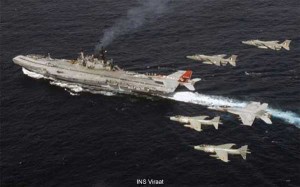 There are also other aspects of force capability enhancement, such as the purchase of INS Jalashwa (Ex-USS Trenton), and the impending induction of the sophisticated P-8I “Poseidon” Maritime Patrol Aircraft (MPA), which are examples of naval cooperation between the US and India.
There are also other aspects of force capability enhancement, such as the purchase of INS Jalashwa (Ex-USS Trenton), and the impending induction of the sophisticated P-8I “Poseidon” Maritime Patrol Aircraft (MPA), which are examples of naval cooperation between the US and India.
The US and Indian Navies also have a lot in common at the doctrinal level. A Cooperative Strategy for 21st Century Sea Power of the US unveiled by the current CNO USN and Commandants US Marine Corps (USMC) and US Coast Guard (USCG) in end 2007, emphasises the need for constructive engagement to face up to the current challenges of maritime security. The Indian Navy also sees the imperatives of cooperation between navies to confront non-traditional threats, as clearly enunciated in our documents Freedom to Use the Seas: India’s Maritime Military Strategy and the Indian Maritime Doctrine 2009.
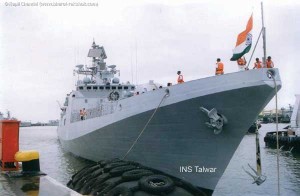 Sharing maritime information undoubtedly will be a major focus area for the two navies to further consolidate our relationship. We have common concerns regarding piracy, maritime terrorism, smuggling and other nefarious activities at sea. Maritime Domain Awareness, thus, will be one of the key result areas. It is in these areas that the two navies will find greater scope for cooperation.
Sharing maritime information undoubtedly will be a major focus area for the two navies to further consolidate our relationship. We have common concerns regarding piracy, maritime terrorism, smuggling and other nefarious activities at sea. Maritime Domain Awareness, thus, will be one of the key result areas. It is in these areas that the two navies will find greater scope for cooperation.
We envision tackling the myriad challenges to maritime security as equal partners, and are putting into place mechanisms that will address our common concerns, while keeping due regard for individual national interests and sensitivities. As is already known, the Indo-US “Framework for Maritime Security Cooperation”, signed in 02 Mar 2006 by Prime Minister Manmohan Singh and President George Bush charts the course for us.
Mumbai Attack and Coastal Security
Some claim that last year’s attacks on Mumbai have exposed chinks in our coastal security. There are those who believe that coastal security is not the task for which the Navy is designed, and this is by very definition, the role of Coast Guard. Is there any thought about formal delineation of roles to prevent overlapping of roles and responsibilities? Isn’t this an imperative, as it affects the force architecture of the Navy of the future?
“”¦the Indian Navys capability building plan continues its focus on further building our blue-water capability and a balanced force structure.”
The coastal security apparatus of the country was reviewed post terrorist attack on Mumbai in Nov 2008. Our vast 7,516.6 km coastline with 13 major and 200 minor ports and innumerable landing places, makes it an extremely difficult task for any single agency to handle on its own. The matter was deliberated at length by the Government and led to promulgation of directives on the role and responsibility of the Indian Navy and the Indian Coast Guard, as well as other maritime stake holders towards ensuring India’s coastal security, and I quote from the government directives that “The Indian Navy has been designated as the authority responsible for overall maritime security which includes coastal security and offshore security.
The Indian Navy will be assisted by Coast Guard, State Marine Police and other Central and State agencies for the coastal defence of the nation”. This was to address, the question of any overlapping of roles/responsibilities.
The directives issued by the Government of India are being met in tandem by the agencies involved, with no compromise of roles or functions in any field. The Central Government and State Government agencies involved in coastal security have joined hands and conducted Coastal Security Exercises along all coastal States and Union Territories to enhance interoperability and check the efficacy of measures being instituted.
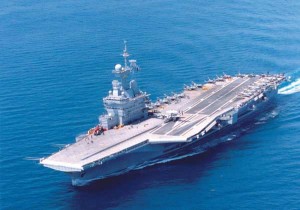 The results have been encouraging and the shortfalls observed are being addressed proactively. Awareness drives have been conducted to educate the coastal communities who are considered as the ‘eyes and ears’ of coastal security and these have also delivered encouraging results and are being continued.
The results have been encouraging and the shortfalls observed are being addressed proactively. Awareness drives have been conducted to educate the coastal communities who are considered as the ‘eyes and ears’ of coastal security and these have also delivered encouraging results and are being continued.
The Indian Navy has adapted itself to the present emergent needs of coastal security, piracy issues in Gulf of Aden and the overall mandate of maritime security of the nation. All these demanding requirements are being met through meticulous operational planning and effective coordination with other agencies in order to achieve operational synergy.
Minor readjustments to our force architecture are also being concurrently made, through induction of appropriate assets and by reorganizing the existing structures, to deal with the demands of coastal security requirements.
“To protect Indian Flagged ships and Indian citizens employed in seafaring duties, the Indian Navy has deployed one warship, continuously, in the Gulf of Aden”¦”
Let me assure you that the Indian Navy’s capability building plan continues its focus on further building our blue-water capability and a balanced force structure. The needs of coastal security have in no way impinged on that capability development plan.
The assets that we now seek to develop for coastal security are over and above the force structure architecture that we already have in place in accordance with our Maritime Capability Perspective Plan.
“Jointness”
When the A&N Command was formed some years ago, it was conceived as the forerunner of close integration among the three Services. But apparently there has been not much headway in that direction, except that the Integrated Defence Staff has been created. What are the prospects for further Armed Forces integration, and what are your views on the Chief of Defence Staff concept and the reasons for lack of progress in pursuing it?
‘Jointness’ and synergy are the inescapable requirements of modern warfare, and I believe it is a work in progress. The decision to convert Fortress Commander Andaman and Nicobar Islands of the Navy to a Tri Services Joint Command, Andaman and Nicobar Command (ANC) was taken by the COSC with due support from the Navy. Every new concept that is introduced takes time to crystallise and in many ways, the progress made in aspects of joint acquisition, centralisation of contractual procedures, studies for platforms, and maintenance commonalities show that jointness’ is taking place. The other ‘Jointmanship’ issues that are being addressed include the following:-
“Awareness drives have been conducted to educate the coastal communities who are considered as the “˜eyes and ears of coastal security and these have also delivered encouraging results”¦”
- Formulation of Joint Doctrines for war fighting in the context of future warfare.
- Joint Training Programmes to address issues relevant to Joint Operations.
- Management of Air Tasking, Air Support and Air Defence operations for aircraft in an amphibious/expeditionary scenario and sharing of air-assets for surveillance/ reconnaissance (AWACS, UAVs etc) and Air Space Management in battle zones.
- Identification of the transformational process required for future Joint Operations including procedures/mechanisms for Ship to Objective Manoeuvre (STOM).
- Identification of equipment induction for amphibious/expeditionary operations that will need to be optimised to the maritime context and our own sea lift capabilities.
- Formulation of Doctrines and Concepts for Joint Logistics.
- Formulation of joint specifications for communication equipment and management of spectrum in a joint environment. Interoperability, digital compatibility, security protocols and reliability of communication systems employed.
- Joint situational awareness through Network Centric Operations, especially sharing of actionable intelligence.
- Formulation of the concept of Command and Control relationship within a networked environment to facilitate optimum tasking of shared resources.
- Compatibility in IFF equipment and procedures.
Insofar as the decision of having a CDS is concerned, the issue is under consideration of the Government of India.
Navy & Diplomacy
The Indian Navy has deservedly won praise for its rapid response in humanitarian crises, and in very successful “flag-showing” cruises to friendly countries. In fact the organisation at IHQ MoD (Navy) now reflects the increased importance being accorded to foreign military cooperation. What are the Navy priorities in foreign military interactions, and are we seeking to expand relation with countries such as Vietnam?
“As our interests grow, trade increases, and energy security becomes increasingly important, the Navy will need to augment its force levels”¦”
The Navy remains a very important instrument of diplomacy for the nation. The contours of Navy’s foreign cooperation are shaped by national interests, security considerations and are in consonance with the foreign policies of the country. Yes, the IN was the first Service to set up a Directorate of Foreign Cooperation. However, even before that, adequate focus was given to this aspect.
As our interests grow, trade increases, and energy security becomes increasingly important, the Navy will need to augment its force levels to protect our national interests. Keeping Sea Lines of Communications (SLOCs) open becomes an important task, which in this globalised world means that the Indian Navy will be called upon to protect ships carrying Indian exports and imports.
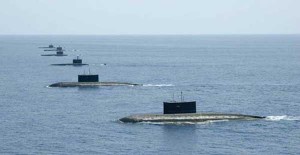 At the regional level, the Indian Navy envisioned the Indian Ocean Naval Symposium (IONS) to encourage navies of the Indian Ocean Region to interact with each other and find common solutions to the maritime threats, and challenges that beset the region. The methodology adopted is to constructively engage one another through the creation and promotion of regionally relevant mechanisms, events, and activities. As you would know, the next round of IONs will commence in May 2010, when the Commander of the UAE Navy, takes over the chairmanship. In fact the theme for IONS 2010 that he has chosen, is reflective of the spirit of IONS: “Together, for the Reinforcement of Maritime Security in the Indian Ocean.”
At the regional level, the Indian Navy envisioned the Indian Ocean Naval Symposium (IONS) to encourage navies of the Indian Ocean Region to interact with each other and find common solutions to the maritime threats, and challenges that beset the region. The methodology adopted is to constructively engage one another through the creation and promotion of regionally relevant mechanisms, events, and activities. As you would know, the next round of IONs will commence in May 2010, when the Commander of the UAE Navy, takes over the chairmanship. In fact the theme for IONS 2010 that he has chosen, is reflective of the spirit of IONS: “Together, for the Reinforcement of Maritime Security in the Indian Ocean.”
The frequency and intensity of natural disasters that emanate from the sea have increased, and it is an important peace time function that navies across the world have been called upon to fulfill. Your readers would be interested in knowing that the theme for the seminar on one day during MILAN 2010 to be held at Port Blair from 03-08 Feb 10 is very appropriately, “Navies in Humanitarian Assistance and Disaster Relief Operation”. In fact, as many as 12 countries are participating in this major bi-annual exercise. Nine navies are sending their ships as well. In all our navy to navy interactions with countries across the IOR and South East Asia, close cooperation in maintaining good order at sea has been the overriding theme. We seek to do this with all likeminded nations who hold a stake in maintaining peace, tranquility and harmony in the oceans.
Piracy
The decisive actions by Indian naval ships in Western Arabian Sea in anti-piracy operations have drawn favourable reactions from most quarters. Is this the result of a re-casting of the rules of engagement in such operations?
“”¦more than 812 merchant ships of varying nationalities, with more than 6,800 Indians onboard have been escorted safely by Indian warships”¦”
Over the past few years, piracy off the coast of Somalia and in the Gulf of Aden, and recently off the Seychelles, has increased considerably and has now assumed very serious proportions. The number of piratical incidents reported in 2009 has surpassed the total number reported in 2008. The total number of attacks reported during 2009 around Somalia, Seychelles and off the Oman coast are about 200.
To protect Indian Flagged ships and Indian citizens employed in seafaring duties, the Indian Navy has deployed one warship, continuously, in the Gulf of Aden, since Oct 2008 for anti-piracy operations. A total of 17 IN ships have been deployed in the Gulf of Aden by turn since Oct 2008. Each deployment has been for a period of approximately 35 to 40 days. In addition, to escorting Indian flagged ships, ships of other flags have also taken our assistance of escort. Merchant ships are currently being escorted along the entire length of the 490 nm long and 20 nm wide Internationally Recommended Transit Corridor (IRTC) that has been promulgated for use by all merchant vessels.
An escort schedule which indicates the commencement date of the escort, at either end of the corridor, is intimated to DG Shipping who promulgates it. This arrangement is working satisfactorily and the presence and actions taken by Indian naval ships in the area have deterred the pirates from hijacking merchant ships on numerous occasions.
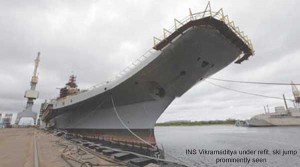 As of date, more than 812 merchant ships of varying nationalities, with more than 6,800 Indians onboard have been escorted safely by Indian warships and at least 15 piracy attempts have been averted by Indian Navy’s ships patrolling the Gulf of Aden. Thus the presence of the Indian Navy in these piracy infested waters has provided security assurance to Indian flagged merchant ships that transit through the Gulf of Aden.
As of date, more than 812 merchant ships of varying nationalities, with more than 6,800 Indians onboard have been escorted safely by Indian warships and at least 15 piracy attempts have been averted by Indian Navy’s ships patrolling the Gulf of Aden. Thus the presence of the Indian Navy in these piracy infested waters has provided security assurance to Indian flagged merchant ships that transit through the Gulf of Aden.
The rules of engagement for ships on anti piracy missions are in consonance with International regulations that permit proportionate action to be taken in self defence. It is therefore emphasised, that the IN has not recast any of its rules of engagement for anti piracy operations, but has maintained continuous vigil and presence in pirate infested areas, rendering help as and when required by any seafarer transiting the area.




